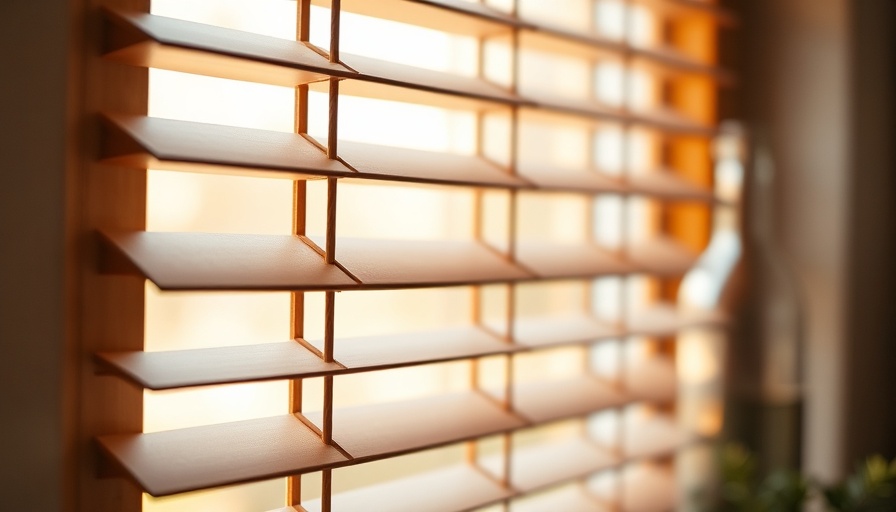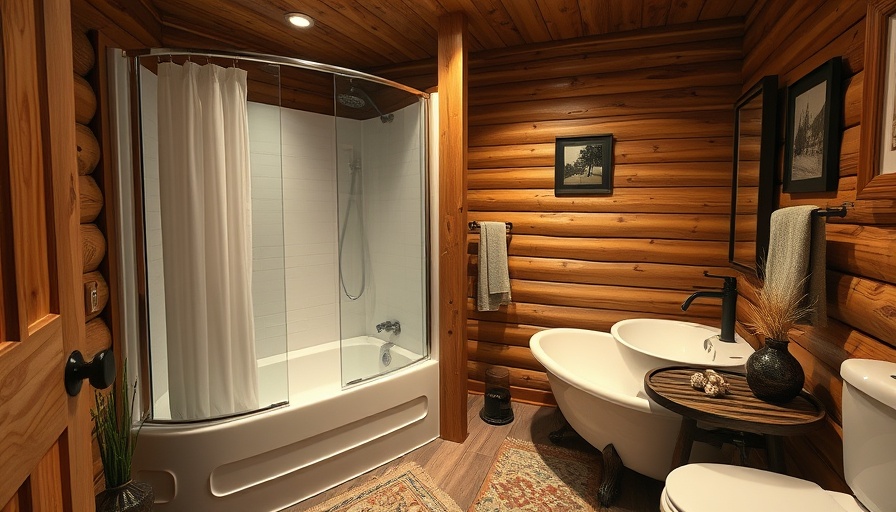
Understanding the Functionality of Blinds and Shutters
Blinds and shutters serve as essential window treatments in various home designs, providing control over light, privacy, and temperature. Blinds feature slats that can be tilted for optimal light adjustment, while shutters offer robust insulation capabilities and can be customized for different window shapes. According to Sheri Stouffer, a design expert, blinds let homeowners manage airflow while keeping their windows accessible for nighttime ventilation.
The Significance of Material and Design Choices
The materials used in blinds and shutters greatly affect their aesthetics and functionality. Wood and composite are common for shutters due to their durability, whereas blinds might utilize a mix of vinyl, aluminum, and fabric. Many modern homeowners in California prefer natural materials, such as wood and bamboo, for a seamless integration into the interior design. This trend aligns well with the eco-friendly movement, highlighting sustainability in home decor.
Benefits and Drawbacks of Shutters vs. Blinds
Homeowners often find themselves weighing the advantages against the costs of shutters and blinds. Shutters generally stand out for their effortless maintenance and the enduring beauty they impart to a home. They can increase property value significantly and provide better energy efficiency, as indicated by various design sources. On the flip side, the cost and installation complexity of shutters might pose a challenge for those on a tighter budget.
Glancing at blinds, affordability is their hallmark. They are easily adjustable, come in various styles and finishes, and allow for simple installations. However, they might require more upkeep than shutters due to their intricate components and susceptibility to damage, a crucial consideration for busy households or those with young children.
A Comparative Cost Analysis
Every window treatment has varying price points based on materials and customizations. As referenced, while basic blinds hover around $11 to $250 depending on the type, shutters might range from $100 to $750 or more. This disparity often leads many homeowners in California to lean towards blinds for everyday applications while saving shutters for decorative or prominent windows.
Trends in Modern Design: What to Keep in Mind
The concept of modern design emphasizes simplicity, sophistication, and the integration of natural light. Blinds and shutters play a vital role by enhancing these elements. The minimalist approach to window treatments currently calls for shades like cellular or roller shades that blend seamlessly with walls, while also allowing plenty of light to filter through.
Moreover, as more people focus on improving their home environment, there is a rising inclination towards smart home technologies. Products that integrate with automated systems for blinds and shutters are becoming increasingly desirable. Homeowners want to control their window treatments remotely, allowing greater convenience and energy control.
Conclusion: Making Informed Choices for Your Home
Diving into the world of window treatments can initially feel overwhelming due to the varieties available. However, understanding the significant differences and the benefits between blinds and shutters can simplify decision-making. Factors such as budget, style preference, and functional needs should all play essential roles in choosing the right window covering. Whether you're invigorating a room with vibrant fabrics or investing in enduring shutter designs, thoughtful consideration will lead to a more fulfilling result.
If you’re in the market for window treatments that not only enhance your home's aesthetics but also improve functionality, reach out to professionals with experience in creating tailored solutions for indoor spaces. Take the next step in your home improvement journey with expert help today!
 Add Row
Add Row  Add
Add 




Write A Comment